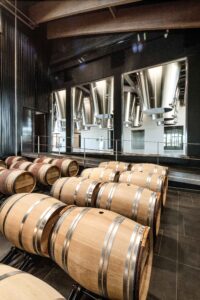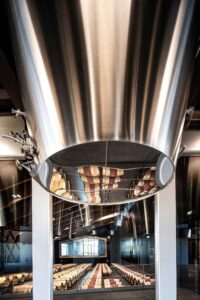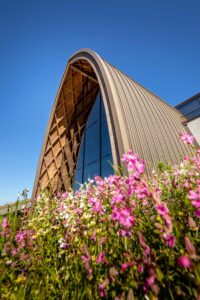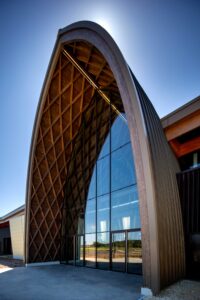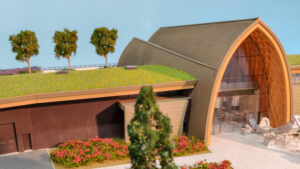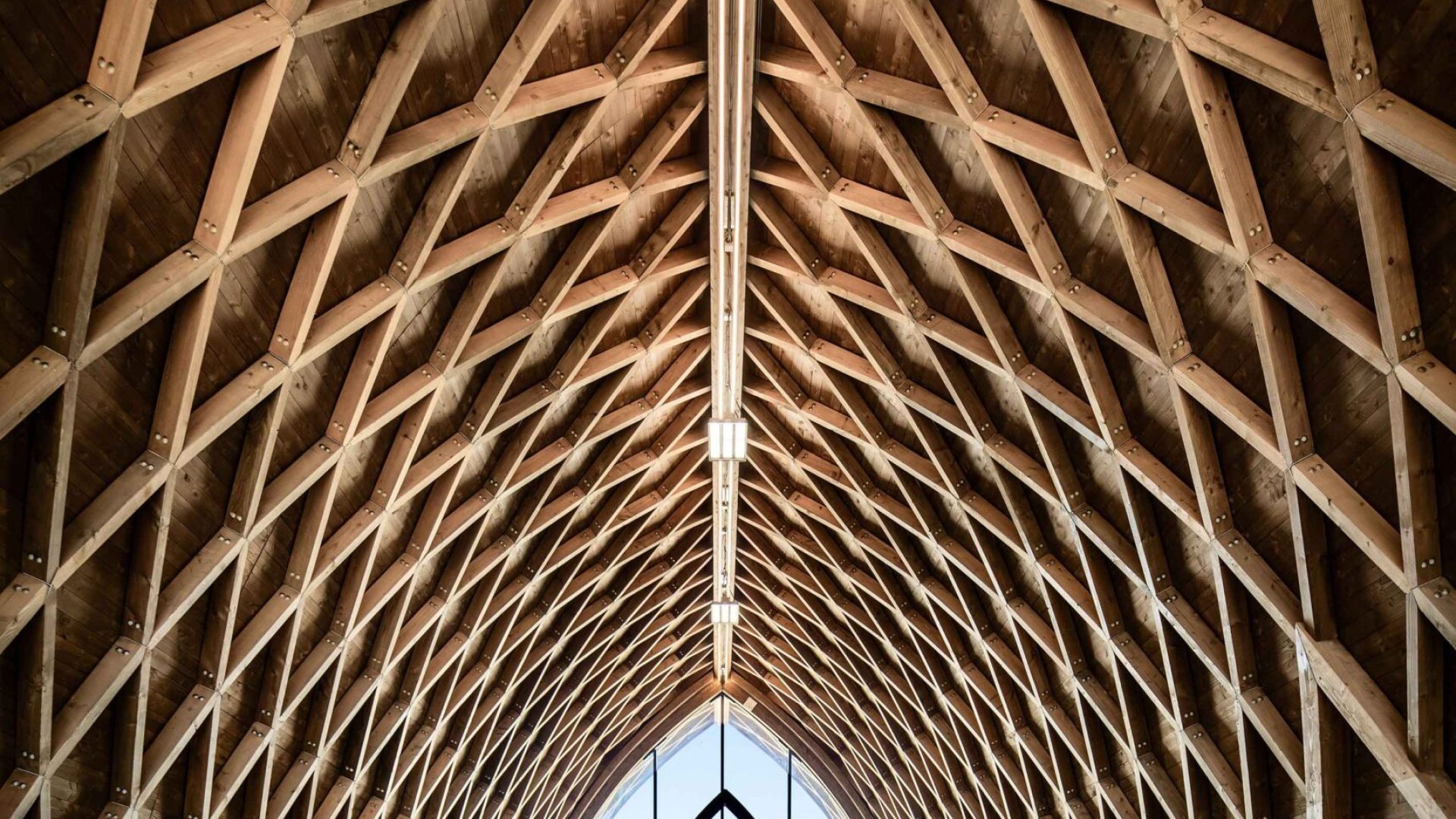
The Architecture Of Wine, The New Carillon D’Angélus Cellar
Immersed in the French countryside surrounded by vineyards and gentle slopes is a surprising building concealed within the landscape: the new winery of Carillon d’Angélus. It is an architecture that showcases new grapes-harvesting technologies and fosters its employees’ well-being and the surrounding panorama.
The new winery structure of Carillon d’Angélus is located in the French administrative division of Libourne, precisely in the town of Saint-Magne-de-Castillon. Château Angélus acquired the winery to expand their current working facilities in Saint-Émilion. As a UNESCO World Heritage Site, the location did not allow easy expansion due to architectural and heritage regulations, which led to the decision to move the new facilities to a whole new area of the region.

Carillon d’Angélus wine estate has been praised for their research-and-develop approach to their products, from the selection of the vineyards to the configuration of the cellar building to the innovative techniques carried out in the wine-making process. The New winery of Carillon d’Angélus, designed by the firm Eric Castagnotto Architecte DPLG, was thought of as a nursery for a novel and high-tech approach allowing for the experimentation of prototypes. Examples of such innovative tests include an electronic mustimeter and grape washer. It also focused on the well-being of its employees through improved efficiency of industrial equipment and better workspaces.
The old winery lacked space to accommodate all of the innovations the wine estates wanted to launch in their production. The spaces were inefficient and did not retain enough room for the new and more advanced winery equipment. These factors led to the creation of a new 4400 msq (47361.21 sq ft) winery chateau surrounded by 3.30 hectares of vineyards capable of accomodating the most advanced high-performing equipment for the production and processing of wine. This included a harvest reception with a high-tech optical sorting, an 18-inverted-tapered-vat vinification room (with a system by hoist and a 100% gravity tank lift), a cellar for MLF (a fermentation process for wine), and an aging cellar. The building’s flexibility will later allow bottling and labeling equipment to be fitted within the space.
The winery’s architecture promoted technological advancement in the agricultural field and allowed the public to appreciate their cutting-edge techniques. These improvements helped highlight the attention the company has put into its products. The structure’s overall design helps emphasize the company’s ethos and agenda. It also highlights the sophistication of goods produced, for example, the Fleur de Boüard.
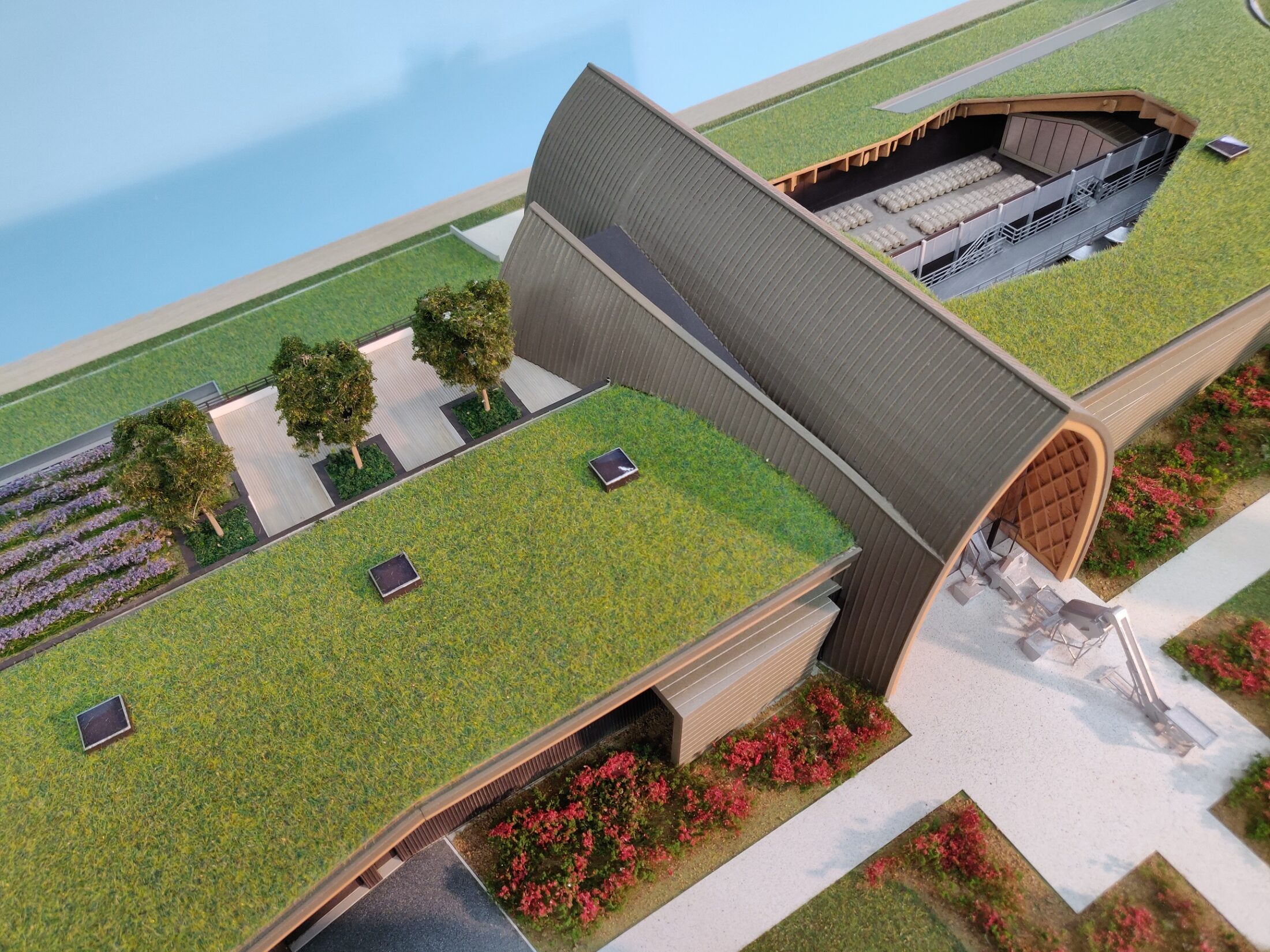
The cellar design comprises a vegetation-sunken part and a visible part; the former is where most of the working spaces are located. The latter is composed of a wooden-arched-framed gallery representing the main entrance to the cellar. The entrance’s iconic shape transmits a sense of grandeur and modernization. At the same time, the interior space is distinguished by some triangulation of wooden planks that cross one another, reminiscing traditional wine cellars. This space is enclosed by a tall partitioned glass wall that reflects the surrounding vineyards, sky, and clouds, camouflaging the building within the landscape.
The architectural device of semi-submerging the building with a green roof emulating a hill in the landscape encompasses the technological and environmental aspects Carillon d’Angélus aims to celebrate. Its environmental impact is also decreased by installing photovoltaic panels throughout the roof of this state-of-the-art building allowing self-production of the required energy for the winery to function and operate. The firm, Eric Castagnotto Architecte DPLG, was established in 1999 and based in Montagne. The practice’s experience in commercial design allows them to convey both tradition and modernity in their projects. To accomplish the winery’s design firm focused on listening and gathering information about Carillon d’Angélus’s history and objectives. The architecture firm has produced this ad-hoc cellar to fully embrace the company’s traditions, integrate the architecture within the environment, and deliver a space to develop an excellent product.
Additionally, the wine estate has been certified of its low environmental impact through the HVE3 certification, the highest level of “High Environmental Value” regarding biodiversity, phytosanitary strategy, and fertilization management. The cellar has received the BREEAM (Building Research Establishment Environmental Assessment Method) certification, an assessment allowing for calculating the environmental impact and performance a building can achieve.
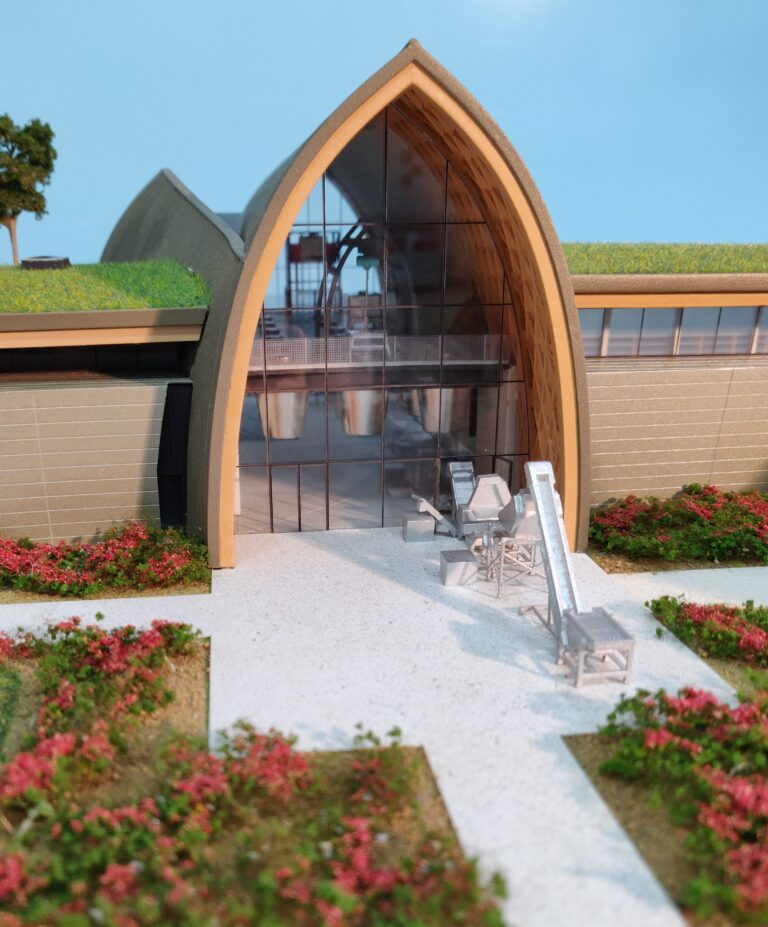
The Ducaroy Grange office was in charge of the prototype of this project, a 1:120 (1850x700mm) model comprising both 3D printing and traditional making techniques. The model is partially skinned to reveal the underneath of the hollow section of the building showing interior fittings such as wooden barrels, corridors, and vats, clearly helping identify how nature and architecture integrate one another in this design.
This “architecture of wine” is a fascinating facility capable of encapsulating the values of a company and its products but simultaneously allowing for flexibility and technological advancement without compromising the environmental value of a vineyard and its landscape.


